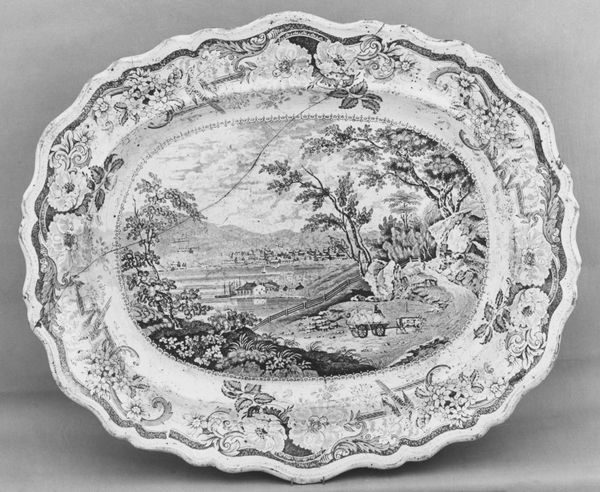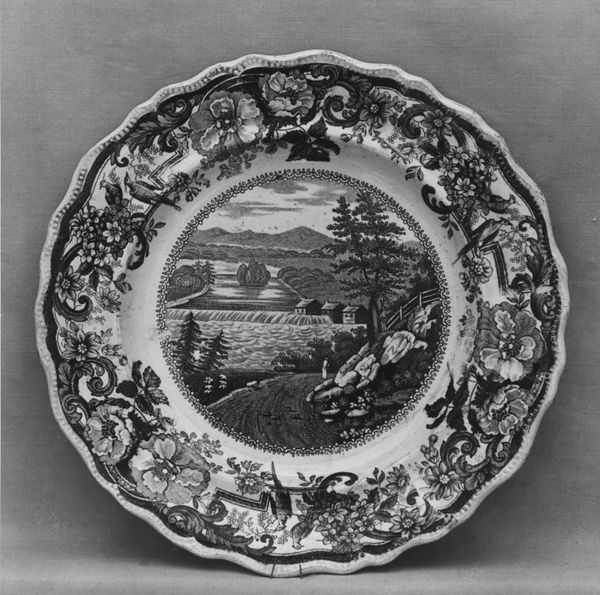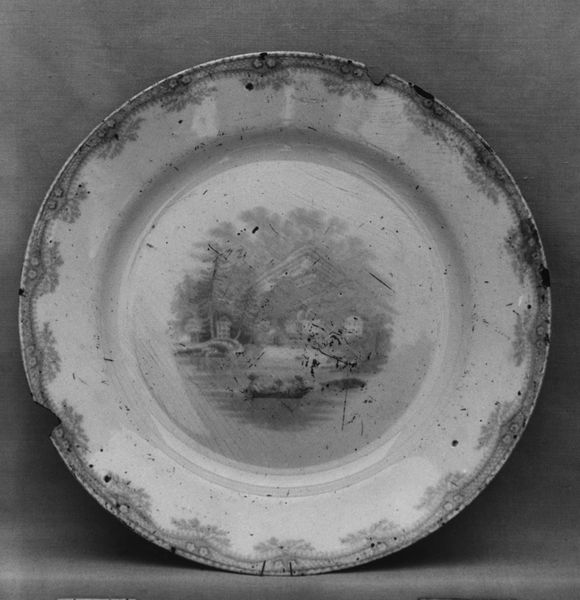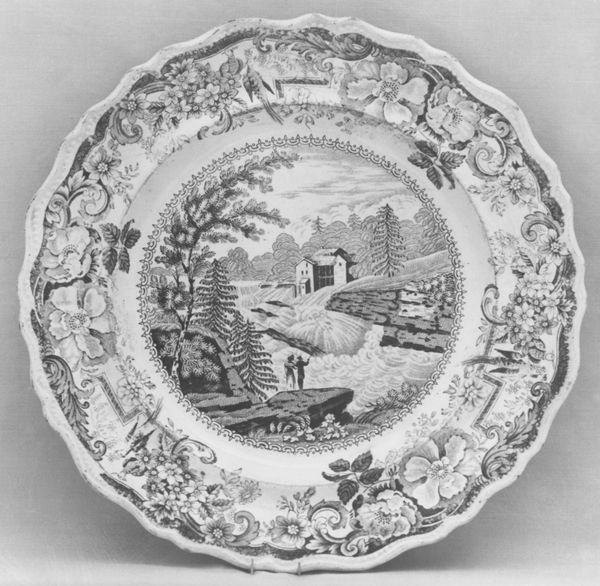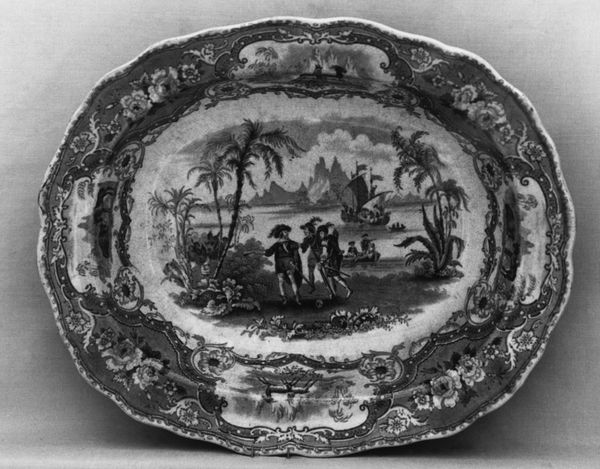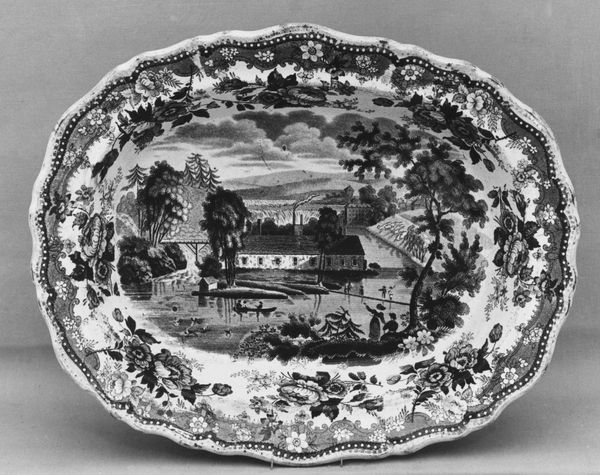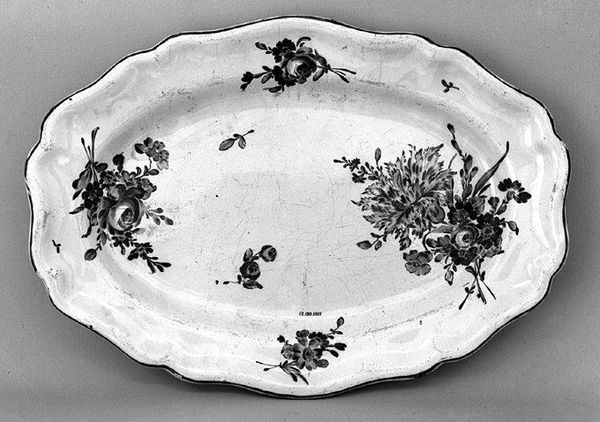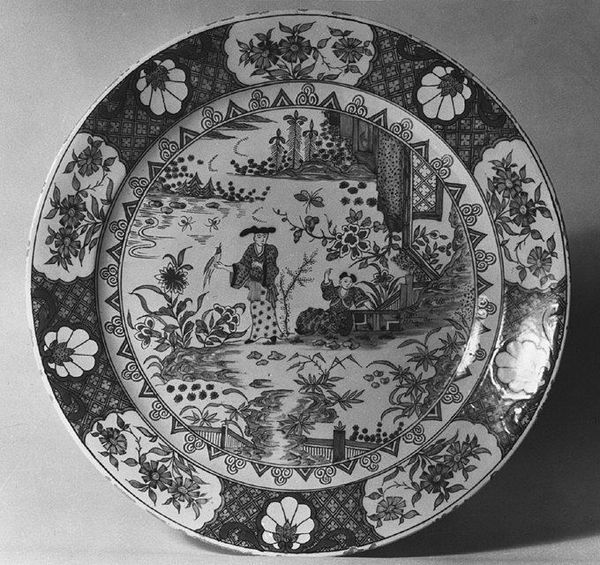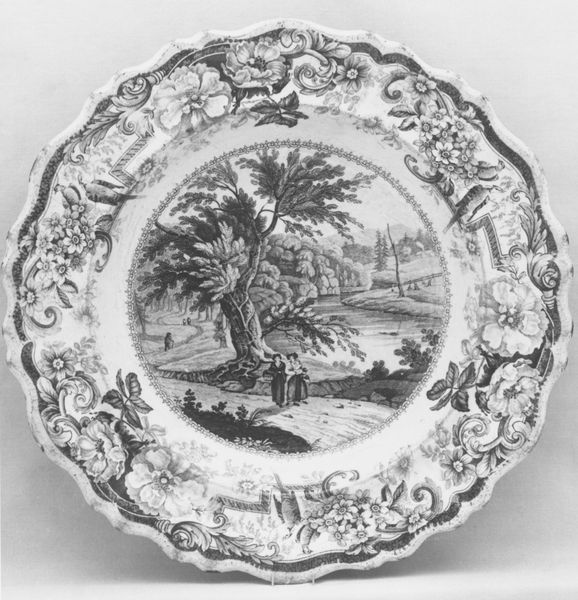
painting, ceramic, earthenware
#
painting
#
sculpture
#
landscape
#
ceramic
#
earthenware
#
stoneware
#
genre-painting
Dimensions: 12 5/8 x 17 1/4 in. (32.1 x 43.8 cm)
Copyright: Public Domain
Curator: This is a Platter created between 1841 and 1849, made of ceramic and earthenware by William Ridgway, Son & Co. The artwork is located at the Metropolitan Museum of Art. Editor: Well, immediately it feels like a picnic on a cloudy day. The monochromatic scene lends it a wistful, almost faded photograph kind of atmosphere, you know? Like looking at a memory through gauze. Curator: Transferware ceramics like this became popular due to their relatively low cost. They enabled manufacturers to produce decorative objects adorned with detailed scenes for a growing middle class, effectively democratizing art ownership. Editor: Absolutely. And it tells you so much about who *owned* these things. Picture it – you'd bring it out to impress your friends and say something pompous like, "Ah yes, a slice of modernity, indeed" while you ate ham from a ceramic platter with this rather serious scene staring back. Ironic, isn't it? The juxtaposition makes me giggle a bit. Curator: That interplay is key. While mass production threatened traditional craft, it simultaneously allowed these landscapes, which often depicted idyllic or historical scenes, to enter everyday life, reinforcing certain social values and national narratives. Editor: There’s almost a stage-like quality to it, those figures gathered in the front and the rather far-away, almost dreamlike village, all framed by trees as if inviting us into the setting. If you placed me there, it looks like the town is floating! Do you have any idea if it's a particular spot the designer knew? Curator: These scenes were typically compiled from popular prints and travel illustrations, circulated widely in both Europe and America. So while it may evoke a specific locale, the overall composition might be more of a composite ideal, a "best of" of scenic views catering to popular tastes and consumer expectations. Editor: Huh! That gives the 'landscape' tag a completely different slant. It isn’t capturing any tangible *thing*, but rather making its case about culture. Almost as a projection of the customer’s expectations. Quite an interesting way to look at it... I won't be able to think about tableware the same again. Curator: Exactly. It becomes a powerful medium for conveying aspirations, anxieties, and ideals about nation, class, and beauty in a rapidly changing society. Thank you for the enlightening insights. Editor: The pleasure was all mine! I think now I want a platter to dream up possibilities.
Comments
No comments
Be the first to comment and join the conversation on the ultimate creative platform.


